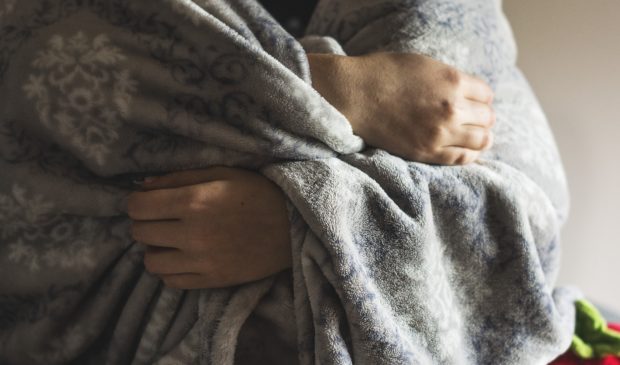Cold weather shelters kept hundreds warm in cold snap
Monday, February 14, 2022 by
Willow Higgins On the rare occasions when the weather in Austin gets uncomfortably cold, Austin Public Health, the Homeless Strategy Division and the Parks and Recreation Department work together to activate the city’s cold weather shelters. In January, the shelters were put to use seven different times by an average of 88 people, most of them men (only 17 percent identified as female). During the most recent cold snap this month, the shelters were open for a total of five days, Feb. 2-6, and helped nearly 500 people stay warm. Eight sites across the city were used, five of which were at capacity.
When snow, sleet and ice hit Austin in early February, the city attempted to provide free transportation to the shelters, medical services for those who needed them, and food and water to help people get through the storm. The city also collected some data on emergency activations and how many used the cold weather shelters, but when Janet Pichette from APH presented to the City Council Public Health Committee Wednesday, the collated data was still preliminary.
APH partnered with the Capital Metropolitan Transportation Authority to provide rides to the shelters in the February storm, which Pichette said worked out really well. Capital Metro picked people up at an embarkation point (One Texas Center on Barton Springs Road) and dropped them off at various shelter locations.
“After the embarkation point was closed, if people did present in the community that needed sheltering, what would happen is 311 would be dispatched and either a Capital Metro or … Austin Disaster Relief Network (employee) would actually pick people up and drop them off at shelter locations,” Pichette said.
“If (the call) came in through 911 or if (the Austin Police Department) or EMS identified people out in the community requiring sheltering, they would pick them up and transport them to those facilities as well,” Pichette continued.
The local homeless advocacy organization Front Steps provided meals for those staying at the shelters. The activations also had “shelter pod kits,” which included a large number of ready-to-eat meals – a helpful resource and a lesson learned last year during Winter Storm Uri. The city also put in a large order for bottled water for the shelters before the boil-water advisory took effect.
Covid-19 continues to make extreme weather events more difficult for public health agencies to grapple with. People seeking cold weather shelter were screened using guidelines from the Centers for Disease Control and Prevention before they could enter, and once they did, they were encouraged to socially distance and wear a mask. Those who didn’t pass the initial screening were tested. Only one person in the most recent storm tested positive and was taken to a designated isolation facility.
The committee expressed appreciation for the hard work done, quickly and safely, to keep people warm this year.
“I have received some phone calls from people who were very, very impressed, by not even just the rapid response, but by the comprehensive response,” said Natasha Harper-Madison, a member of the Public Health Committee.
The Austin Monitor’s work is made possible by donations from the community. Though our reporting covers donors from time to time, we are careful to keep business and editorial efforts separate while maintaining transparency. A complete list of donors is available here, and our code of ethics is explained here.
You're a community leader
And we’re honored you look to us for serious, in-depth news. You know a strong community needs local and dedicated watchdog reporting. We’re here for you and that won’t change. Now will you take the powerful next step and support our nonprofit news organization?











